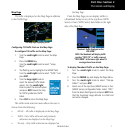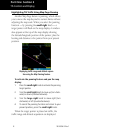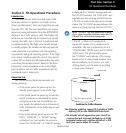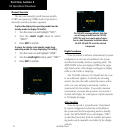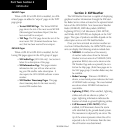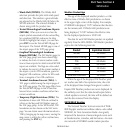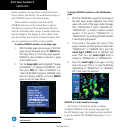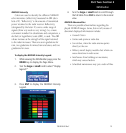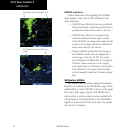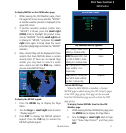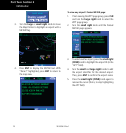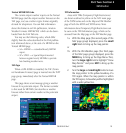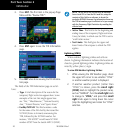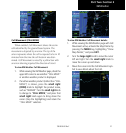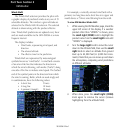
15
Part Two: Section 2
XM Weather
NEXRAD Intensity
ColorsareusedtoidentifythedifferentNEXRAD
echo intensities (reflectivity)measuredindBZ(deci-
belsofZ).“Reectivity”istheamountoftransmitted
power returned to the radarreceiver.Reectivity
(designatedbytheletterZ)coversawiderangeof
signals(fromveryweaktoverystrong).So,amore
convenient number for calculations and comparison, a
decibel(orlogarithmic)scale(dBZ),isused.ThedBZ
values increase as the strength of the signal returned
to the radar increases. There are seven gradations for
rain,twogradationsformixedrainandsnow,andtwo
gradations for snow.
To display the NEXRAD Intensity Legend:
1. While viewing the XM Weather page, press the
MENU key to display the Page Menu.
2. Turn the large or small knob to select “Display
legend?”
3. Press ENT to display the NEXRAD Intensity
Legend.
4. Turn the large or small knob to scroll through
the full table. Press CLR to return to the normal
view.
NEXRAD Abnormalities
There are possible abnormalities regarding dis-
playedNEXRADimages.Some,butnotall,causesof
abnormal displayed information include:
•GroundClutter
•Strobesandspuriousradardata
•Sunstrobes,whentheradarantenna points
directly at the sun
•Militaryaircraftdeploymetallicdustwhichcan
cause alterations in radar scans
•Interferencefrombuildingsormountains,
which may cause shadows
•Scheduledmaintenancemayputaradaroff-line
190-00356-30 Rev F



